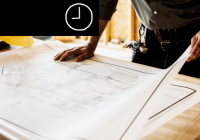Costs are inevitable when building and renovating. When we talk ‘cost’, we immediately think money. And it’s true, your build project will cost money, but it will also cost two other valuable life currencies-
-
Your ‘Time‘ and,
-
Your ‘Energy‘.
Over the next three newsletters, we will focus on each. But for today- Let’s talk about ‘Money’.
Of course, construction cost is the most significant contributor to your total monetary investment. Still, other expenses, in and around the build, will inform the total cost of your project. Let’s consider it in stages.
Stage 1- Pre-Build.
Before building, we must first design, document and permit the works. There is a tendency to ‘skimp’ in these preparatory stages to feed the build cost, but to do so is risky. The quality of the design and documentation ultimately protects the build.
Pre-build investment varies depending on site conditions and architectural complexity. It could be as little as $10k on small renovation projects or as high as $200k+ on complex, large-scale projects. Engaging the ‘right’ professionals suited to you and your project is a wise investment, given your design will inform your home’s beauty and livability. Quality documentation and specifications will also minimise potential changes and variations during construction.
Stage 2- Build.
According to data released by the Australian Bureau of Statistics (ABS) for ‘House Construction Australia’, build costs have increased by approx.—35% since mid-2020, and they won’t likely go down. But we can take some comfort knowing building costs have settled into a more predictable ‘norm’.
The construction rate for your project will vary depending on the scope and complexity of the works, but at this snapshot in time, the construction rates per m2 look like a bit like this;
Stage 3- Post-Build.
Minimum post-build fees will include service connections. But homeowners typically like to complete their build complimented with landscaping and new soft furnishings. Factoring an allowance for these finishing elements is a good idea.
Ultimately-
The best way to protect your money from budget blowouts and unanticipated costs is to calculate a feasible investment for each stage and then direct your project’s path accordingly.
Projects don’t come in on budget just because we want them to. Financial project planning is key to protecting your ‘money‘.






